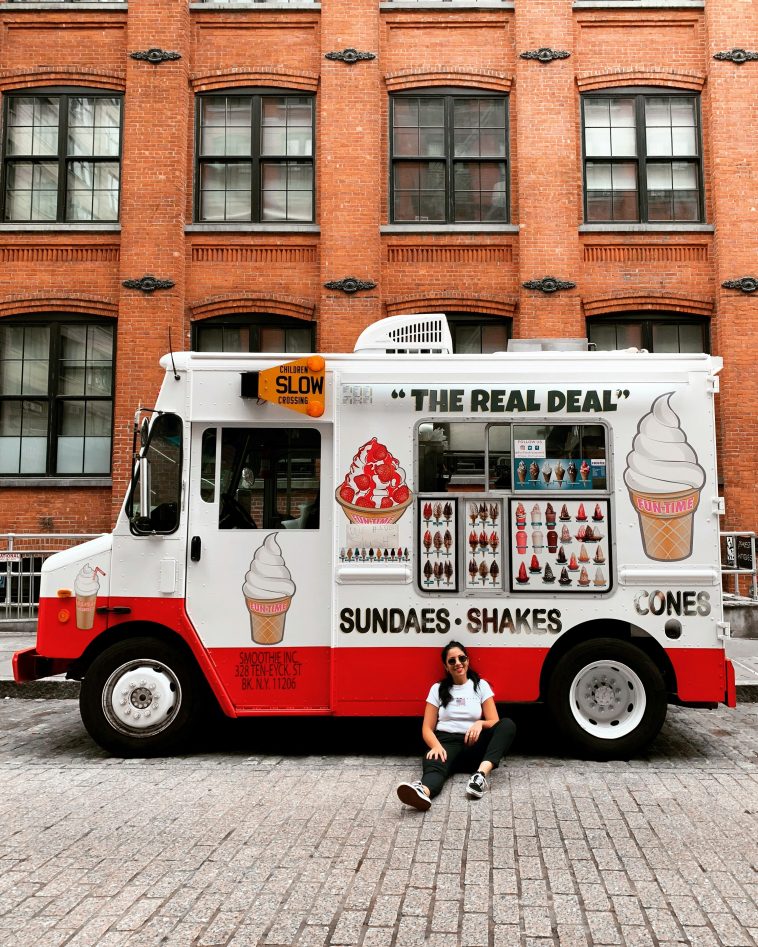Food trucks have transformed the way people enjoy food, combining convenience, creativity, and community. However, serving up great dishes is just part of the equation for success. A thriving food truck business requires smart marketing strategies to attract customers, build a loyal following, and ensure your brand stands out in a sea of competitors.
The beauty of food truck marketing is that it doesn’t need to be overwhelming or expensive. By leveraging social media, hosting events, and telling your unique story, you can connect with your audience and turn casual diners into lifelong fans. Let’s explore how to take your food truck’s marketing to the next level with simple, effective, and budget-friendly tactics.
Why Food Truck Marketing is a Big Deal
Marketing is the lifeblood of any food truck business. It goes beyond letting people know what’s on your menu—it’s about building relationships, standing out, staying top of mind, and creating an unforgettable experience. Before we dive into the strategies, let’s take a closer look at why food truck marketing is so essential.
Attracting Customers
Customers won’t always stumble upon your food truck by chance, especially if you’re in a competitive area. Marketing ensures that you’re not just relying on luck to bring people to your truck. It actively draws attention to your business, letting potential customers know exactly where you are, what you’re offering, and why they should visit.
A strong marketing strategy allows you to showcase the highlights of your food truck. Whether it’s mouthwatering photos of your best dishes or posts about special events, marketing keeps your audience informed and excited. It’s like putting a megaphone to your brand and calling out to hungry diners nearby.
Marketing also builds anticipation. Sharing daily location updates or teasing new menu items gets customers excited about what’s coming next. When your audience knows what to expect, they’re more likely to make plans to visit, creating consistent foot traffic for your truck.
Competing with Other Trucks
The food truck market is thriving, and that means competition. With so many trucks craving for attention, standing out can feel like a challenge. This is where creative marketing gives you the edge. It allows you to highlight your unique strengths, whether it’s your signature dish, fun truck design, or stellar customer service.
For example, if your truck serves gourmet grilled cheese sandwiches, your marketing can emphasize the comfort food nostalgia with a modern twist. Or if you cater to health-conscious foodies, your strategy can highlight the fresh, wholesome ingredients you use. A well-crafted marketing plan communicates your identity and shows customers why they should choose you over the truck next door.
Growing Your Business
Marketing doesn’t just bring customers to your truck—it’s also a key ingredient for growth. A solid marketing strategy helps you build a strong reputation, which can open the door to new opportunities. More visibility means more catering gigs, event invitations, and loyal customers who rave about your food to their friends and family.
As your business grows, marketing continues to be your guide. It helps you expand your reach, whether you’re adding more trucks, experimenting with new menu items, or even transitioning to a brick-and-mortar restaurant. Marketing is your partner in turning big dreams into reality.
Food truck marketing isn’t just a “nice to have”—it’s the foundation of your success. By attracting customers, competing effectively, and supporting your business’s growth, it’s the fuel that keeps your truck rolling forward.

3 Challenges in Food Truck Marketing and How to Tackle Them
Every food truck owner faces challenges when it comes to marketing. Tight budgets, stiff competition, and staying visible are common obstacles. But these challenges can be opportunities in disguise if you know how to address them. Let’s explore some of the hurdles food truck owners face and the creative ways to overcome them.
Challenge 1: Limited Budget
Marketing on a shoestring budget is one of the biggest concerns for food truck owners. With so many costs to juggle, it’s tempting to push marketing to the back burner. However, a tight budget doesn’t mean you have to sacrifice results.
Social media is your best friend when working with limited funds. Platforms like Instagram, TikTok, and Facebook are free to use and offer incredible reach. Post eye-catching photos of your dishes, share behind-the-scenes videos, and engage with followers to build a strong online presence.
Another budget-friendly approach is word-of-mouth marketing. Encourage happy customers to share their experience by tagging your truck in posts or leaving reviews online. User-generated content acts as free advertising and creates a sense of trust among potential customers.
A small budget doesn’t have to hold you back. By focusing on free or low-cost tools and methods like social media and word-of-mouth, you can stretch your marketing dollars further and still make a big impact.
Challenge 2: Letting People Know Where You Are
Mobility is one of the perks of owning a food truck, but it can also be a challenge. Customers won’t always know where to find you unless you tell them. This is where location-based marketing becomes essential.
Real-time updates on social media are a must. Each morning, post your location for the day along with an inviting photo of one of your dishes. Use hashtags like #FoodTrucksNearMe or #LunchSpot to increase visibility. Pairing these updates with photos of your delicious dishes makes it easier for customers to find and choose your truck.
Partnering with food truck locator apps like StreetFoodApp or Roaming Hunger can also help customers track you down. These platforms make it easy for users to see where you’re parked and what’s on your menu.
Staying visible is half the battle. With real-time updates and location apps, you can ensure customers always know where to find their next meal.
Challenge 3: Standing Out from the Competition
With so many food trucks out there, it’s crucial to carve out a niche that makes you unforgettable. This starts with identifying what makes your truck special. Is it your menu? Your service? Your overall vibe? Once you know your strengths, let them shine in your marketing.
Storytelling is one of the most effective ways to stand out. Share the journey behind your food truck—why you started it, what inspires your menu, or the meaning behind your branding. Personal stories create an emotional connection, making your truck memorable. Create behind the scene videos, and interact with your audience to really establish that personal connection with your audience.
Creative branding also plays a key role. A bold truck design, a catchy tagline, or even a fun mascot can help you make a lasting impression. Embrace the personality of your brand! If your brand is all about being bold and fun, don’t hold back on the quirkiness in your voice and visuals.
Standing out is all about showcasing what makes you unique. By sharing your story and investing in creative branding, you can leave a mark in the crowded food truck scene.
Standing out in the busy food truck scene means showing what makes you special. Customers look for more than tasty food—they love a story, an experience, and a connection. By sharing why you started your truck, the ideas behind your menu, or what makes your food unique, you create something people can relate to and remember. Creating unique content and joining in on trending challenges can help you stand out on social media, and appeal to a larger audience.
Constantly creating unique content will not only attract more viewers, but maintaining that consistency will have social media users keep on coming back. Combine this with creative touches like a bright truck design, a fun logo, and a catchy name, and you’ll be hard to forget. A unique and personal approach helps you stand out and keeps people coming back for more.

4 Ways To Build Your Food Truck Brand
Your food truck’s brand is its identity. It’s more than just the food you serve—it’s how customers understand your business, what makes you unique, and why they remember you long after their meal. A strong brand ties together your visuals, messaging, and overall vibe to create a lasting impression. But how do you build a brand that resonates with customers? Let’s dive in.
1. Create a Unique Visual Identity
First impressions matter, and your food truck is a moving billboard. The design of your truck should immediately catch people’s attention. Choose colors, fonts, and graphics that reflect your food and your personality. If you serve spicy tacos, opt for bold, fiery reds and yellows. If your menu is all about fresh, healthy eats, lean into greens and natural tones.
Your food truck logo is a vital part of this visual identity. It should be simple, memorable, and versatile. Think about how it will look on everything from your truck to your social media posts to branded merchandise like t-shirts or stickers. A great logo doesn’t just look good—it tells a story about your food truck.
Don’t forget about the name of your food truck! A catchy, creative name can make all the difference in how customers remember you. Combine puns, cultural references, or alliteration to make your name stand out. For example, “Grillzilla” or “Rollin’ Sushi” are names that are both descriptive and fun.
2. Tell Your Story
Your brand isn’t just what customers see—it’s also what they feel. Telling the story behind your food truck adds a personal touch that customers can connect with. Why did you start your food truck? What inspires your menu? What challenges have you overcome along the way? Sharing these details makes your brand relatable and human.
Use your story in your marketing materials. Write a short bio for your website or social media that highlights your journey and passion. Post videos or photos that show the hard work and love you put into your food. When customers feel they know you, they’re more likely to support your business and recommend it to others.
3. Build a Memorable Menu
Your menu is part of your brand, too. It should be distinctive, creative, and aligned with the image you want to project. Are you the truck known for crazy burger toppings? Or the one serving authentic, family-recipe dumplings? Whatever your focus, make sure your menu reflects it.
Naming your dishes can also add personality. Instead of “cheeseburger,” try something fun like “The Ultimate Melt Machine.” Descriptive names that tie into your brand make your menu more engaging and memorable.
4. Create a Consistent Voice
Every interaction with your audience should feel like it’s coming from the same place. This includes your social media captions, website text, and how you interact with customers in person. If your brand is quirky and fun, your posts might include puns and jokes. If you’re more sophisticated, your tone might be elegant and polished. A consistent voice across your marketing is crucial with a marketing plan for your food truck.
A consistent voice builds trust and makes your brand feel professional. Over time, customers will come to recognize your style and associate it with your food truck.
Building your food truck brand is about creating a complete package that reflects your food, personality, and story. From your truck design to your menu to your online presence, every detail should work together to leave a lasting impression.

7 Ways To Leverage Social Media To Market Your Food Truck.
Social media is one of the most powerful tools in a food truck owner’s marketing toolkit. It’s where customers spend their time, discover new places to eat, and share their experiences. By using social media effectively, you can create buzz, connect with your audience, and keep your truck top of mind.
1. Choose the Right Platforms
Not all social media platforms are created equal. Focus on the ones where your audience is most active and where food content thrives, and that fits with the content you plan to put out.
Instagram: Perfect for catchy food photos, behind-the-scenes videos, and daily updates. Use Instagram Stories and Reels to engage followers with quick, fun content.
Facebook: Great for building a local community. Share event details, daily schedules, and customer shoutouts. Facebook Groups can also help you connect with foodies in your area.
TikTok: The ultimate platform for creative and viral content. Show off your cooking process, share funny moments, or post challenges related to your food truck.
X (Twitter): Ideal for real-time updates. Share your location, menu changes, or quick responses to customer questions.
2. Post Consistently
Consistency is key to building an engaged social media following. Create a content calendar to plan your posts in advance. Aim to post at least three to five times a week to keep your audience engaged.
Mix up your content to keep it interesting. Share photos of your most popular dishes, post videos of your cooking process, and highlight your team’s personality. Include customer shoutouts and user-generated content—when people see others enjoying your food, they’re more likely to check you out.
3. Engage with Your Audience
Social media isn’t just about broadcasting—it’s about building relationships. Reply to comments and messages, thank customers who tag you in posts, and encourage followers to share their experiences. Engagement makes your followers feel valued and turns them into loyal customers.
Hosting interactive activities is another great way to engage. Run polls on Instagram Stories, ask for menu suggestions, or create contests where followers can win free meals or merchandise. Activities like these keep your audience invested in your brand.
4. Use High-Quality Visuals
Social media is a visual platform, especially when it comes to food. Invest in good lighting and composition for your photos. Now that does not mean your videos and photos have to look like a Hollywood production, but make sure you have a good camera or phone with a great lens, and you are in a well-lit place. A beautifully plated dish or a close-up of a gooey, cheesy burger can stop someone mid-scroll and make them interested in trying your food.
Videos are even more engaging. Show your cooking process, highlight the freshness of your ingredients, or capture the atmosphere around your truck. Even simple smartphone videos can be effective if they’re well-lit and focused.
5. Experiment with Paid Advertising
If you have a small marketing budget, consider using paid ads on platforms like Instagram and Facebook. You can target local audiences based on location, interests, and demographics. For example, you can run an ad that appears to users within a 10-mile radius of your truck’s location.
Paid ads are especially useful for promoting special events, new menu items, or your truck’s grand opening. Even a small investment can increase your visibility and bring in new customers.
6. Leverage Hashtags and Trends
Hashtags help your content reach a wider audience. Use popular ones like #FoodTruckLife, #Foodie, or #StreetFood, but don’t forget location-specific hashtags like #FoodTrucksInToronto or #NYCFoodTrucks. You can also create a branded hashtag for your truck, such as #BurgersOnWheels, and encourage customers to use it when they post about you.
Keep an eye on social media trends, too. If there’s a viral challenge or popular meme that fits your brand, jump on it! Timely content shows that your truck is fun, relatable, and part of the conversation.
7. Collaborate with Influencers and Local Creators
Teaming up with influencers and local content creators is a cost-effective method and can give your food truck a big boost on social media. These individuals already have engaged followers who trust their recommendations, making them ideal partners for spreading the word about your truck.
Focus on creators who align with your brand and target audience, such as foodies or lifestyle influencers in your area. Offer them a free meal in exchange for a post, story, or review featuring your truck. Even micro-influencers with smaller but loyal followings can have a significant impact.
This collaboration introduces your food truck to new audiences and adds credibility through authentic recommendations. Plus, it’s a fun way to generate buzz and create visually appealing content for your own social media channels.
Social media is a must-have for food truck marketing. By choosing the right platforms, posting engaging content, and connecting with your audience, you can turn followers into customers and build a thriving online community around your brand. By focusing on building a strong brand and mastering social media, you can give your food truck the visibility and personality it needs to succeed. With these strategies in place, your truck won’t just serve food—it will create unforgettable experiences that keep customers coming back for more.






GIPHY App Key not set. Please check settings